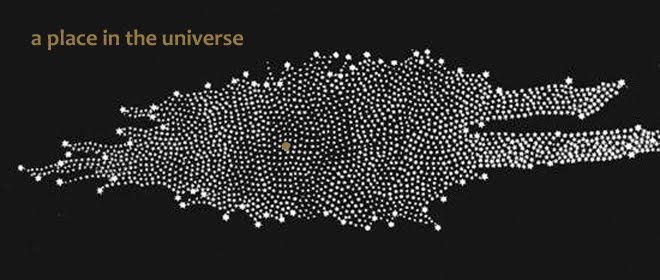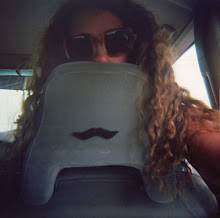I am an interdisciplinary artist whose work commonly takes the form of kinetic, interactive, and time-based sculpture. I often use language and time as sculptural materials. The inventor Charles Babbage once said, “Machines have been taught arithmetic instead of poetry.” In a way, I teach machines poetry. I also teach them to stop making sense.
Like found objects, written language appeals to my desire to provide my audience with a very basic level of accessibility. Any literate person can hardly avoid reading, and thus understanding, any text placed before them. The words and phrases that intrigue me most are found in our everyday vocabulary, simple words that have many definitions and thereby allow for multiple layers of meaning. If such a word or phrase is constructed in three dimensions, it can be broken down into its most fundamental parts, and assembled and disassembled over time or as a result of viewer interaction. Words can appear and disappear, allowing the work’s meaning to remain in flux and illustrating how language is constantly being reshaped by our interactions.
“Eternity” (2010) is a wall-mounted sculpture that was made in collaboration with Mike Fleming. It consists of 30 electric clocks rear-mounted to a large sheet of white acrylic whose hands collectively spell the word ETERNITY once every twelve hours. Like most of my work, “Eternity” investigates the close relationship between language, image and time. The incessant birth, death and rebirth of that word is a metaphor for the fleeting nature of our own existence, and for our desire to live forever. Time, by definition, is “the indefinite continued progress of existence, and events in the past, present and future regarded as a whole.” As we mark, measure and keep time, so too should we contemplate and evaluate the ways we spend it. Time is the ultimate currency.
Making art is like speaking in tongues. I am compelled to speak without knowing exactly what I’m saying. My work requires an interpreter – someone willing to step forward (sometimes literally), to investigate, to decipher, and to translate the work’s message. Because my art practice is driven by concept as opposed to process, my most successful work is made in collaboration. Ideas are always better when they’re bounced around a bit. Many artists enjoy working alone in their studios, but I prefer making work in conversation. It allows me to share the experience, the excitement, the responsibility and the success with another person. The final product is essentially also a collaboration, this time between the artists and the audience. In the end, the work is yours as much as it is mine.
Friday, June 22, 2012
Friday, June 15, 2012
Keeping Time - A solo exhibition at COOP Gallery
I recently got back from a two-week road trip through the south, during which I installed a solo exhibition at COOP Gallery in Nashville, Tennessee. Here are some images of the work on view (click on titles for more images and info):
NOW
kinetic sculpture that spells the word now once every second
Pulse Machine
electromechanical sculpture with a human lifespan, made in collaboration with Alexander Reben
kinetic sculpture that spells the word now once every second
Pulse Machine
electromechanical sculpture with a human lifespan, made in collaboration with Alexander Reben
twelve foot line drawing, drawn over the course of twelve hours
All the Time
a clock with twelve functioning hour hands
Equation
neon
And here is the info from the press release:
Keeping Time
by Alicia Eggert
June 2nd – 30th, 2012
a clock with twelve functioning hour hands
Equation
neon
And here is the info from the press release:
Keeping Time
by Alicia Eggert
June 2nd – 30th, 2012
Opening reception June 2nd, 6-9pm
"Time is connected to language. One needs to be able to describe an event to recall it to another person. A clock maker is called a horologist, a Greek term derived from their word for time and speech. Our conception of time and being able to recount events is a grounding mechanism. From seconds to decades we add markers to our personal timeline. Time can conflict itself. Real time fights with our memory as the actual accounts of events shift into concise fragments. Alicia Eggert’s work asks the question how much should we trust the instruments of time we have come to rely on.
For the month of June COOP Gallery will be presenting “Keeping Time”, by Alicia Eggert. “Keeping Time” will present different ways of seeing and understanding time. The exhibition will include drawing, photography and kinetic sculpture. One kinetic sculpture repeatedly creates and destroys NOW; another reveals the hidden mathematics of life. Cyclical, linear, finite and infinite representations of time are juxtaposed. Change is the only constant.
The opening reception will feature the birth of Pulse Machine, an electromechanical sculpture with a human lifespan that was made in collaboration with Boston-based artist and engineer, Alexander Reben."
"Time is connected to language. One needs to be able to describe an event to recall it to another person. A clock maker is called a horologist, a Greek term derived from their word for time and speech. Our conception of time and being able to recount events is a grounding mechanism. From seconds to decades we add markers to our personal timeline. Time can conflict itself. Real time fights with our memory as the actual accounts of events shift into concise fragments. Alicia Eggert’s work asks the question how much should we trust the instruments of time we have come to rely on.
For the month of June COOP Gallery will be presenting “Keeping Time”, by Alicia Eggert. “Keeping Time” will present different ways of seeing and understanding time. The exhibition will include drawing, photography and kinetic sculpture. One kinetic sculpture repeatedly creates and destroys NOW; another reveals the hidden mathematics of life. Cyclical, linear, finite and infinite representations of time are juxtaposed. Change is the only constant.
The opening reception will feature the birth of Pulse Machine, an electromechanical sculpture with a human lifespan that was made in collaboration with Boston-based artist and engineer, Alexander Reben."
Wednesday, June 13, 2012
NOW, 2012
DC motor, Arduino microcontroller, acrylic, plywood, mixed media
The red acrylic line segments align to spell the word ‘NOW’ approximately once every second. Made with help from Alexander Reben.
Tuesday, June 12, 2012
Pulse Machine, 2012
kick drum, solenoid, flip digit numerals, Arduino microcontroller, mixed media
This electromechanical sculpture was 'born' in Nashville, Tennessee on 2 June 2012, at 6:18 PM. It has been programmed to have the average lifespan of babies born in Tennessee on that same day: approximately 78 years. The kick drum beats its heartbeat (at 60 beats per minute), and the mechanical counter displays the number of heartbeats remaining in its lifetime. An internal, battery-operated clock keeps track of the passing time when the sculpture is unplugged. The sculpture will die once the counter reaches zero. Made in collaboration with Alexander Reben.
Subscribe to:
Posts (Atom)










